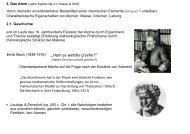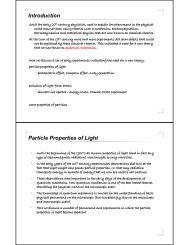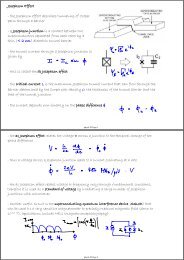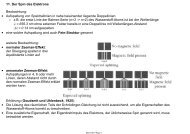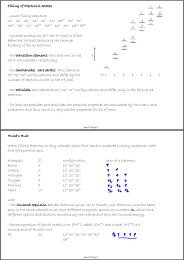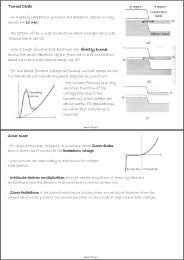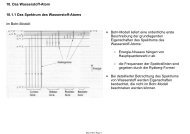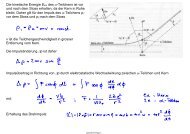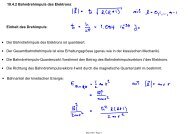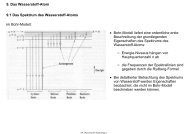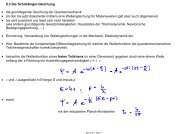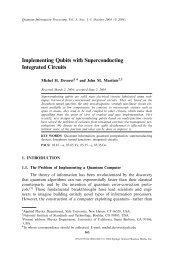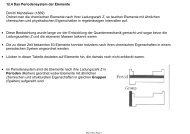Free Electrons in a Metal - in a typical metal each atom contributes ...
Free Electrons in a Metal - in a typical metal each atom contributes ...
Free Electrons in a Metal - in a typical metal each atom contributes ...
You also want an ePaper? Increase the reach of your titles
YUMPU automatically turns print PDFs into web optimized ePapers that Google loves.
Ionic Crystals<br />
- ionic crystals form between (a pair of) elements with low<br />
ionization energy and high electron aff<strong>in</strong>ity,<br />
- electron aff<strong>in</strong>ity is the energy released by an <strong>atom</strong> when an<br />
electron is added to form a negatively charged ion<br />
- <strong>in</strong> the ionic crystal sodium chloride (NaCl, see figure) one<br />
electron is transferred from Na (ionization energy 5.14 eV) to Cl<br />
(electron aff<strong>in</strong>ity 3.61 eV) form<strong>in</strong>g ions Na + and Cl - which<br />
b<strong>in</strong>d electrostatically when the total energy <strong>in</strong> the crystal is<br />
reduced from that of separate Na and Cl<br />
- m<strong>in</strong>imum ion-ion distance is determ<strong>in</strong>ed by balance between<br />
Coulomb attraction and repulsion due to Pauli exclusion<br />
- the cohesive energy is the energy per <strong>atom</strong> required to break a<br />
the crystal up <strong>in</strong>to ions<br />
- the cohesive energy is provided by the Coulomb attraction with<br />
the neighbor<strong>in</strong>g ions<br />
Attractive Coulomb Potential<br />
phys4.16 Page 11<br />
face centered cubic NaCL<br />
- f<strong>in</strong>d the total Coulomb energy Uc between one ion (e.g. Na + ) and all its neighbors<br />
body centered cubic CsCl<br />
- Uc is determ<strong>in</strong>ed by the number of ions (coord<strong>in</strong>ation number) present at a given<br />
distance r from the ion under consideration<br />
- nearest neighbors<br />
- next nearest neighbors<br />
- summation over all nearest neighbors<br />
- with the Madelung constant α ~ 1.748 for NaCL and all other face centered cubic<br />
(fcc) ionic crystals<br />
- for the body centered cubic (bcc) crystal CsCl the Madelung constant is α ~ 1.763<br />
- all simple crystal structures have Madelung constants α ~ 1.6 - 1.8<br />
phys4.16 Page 12



